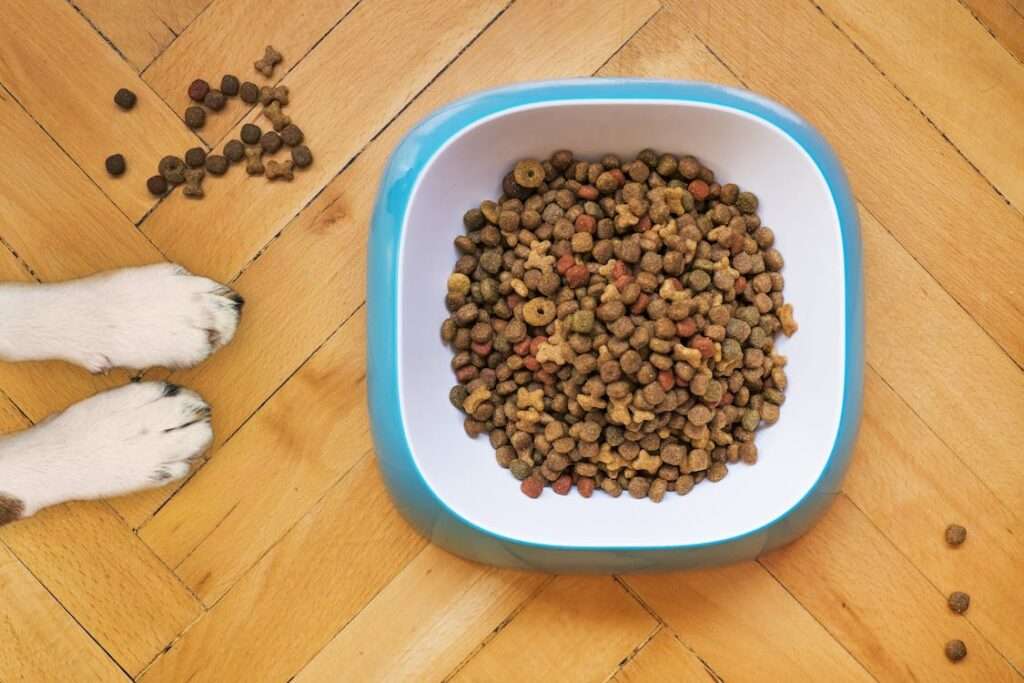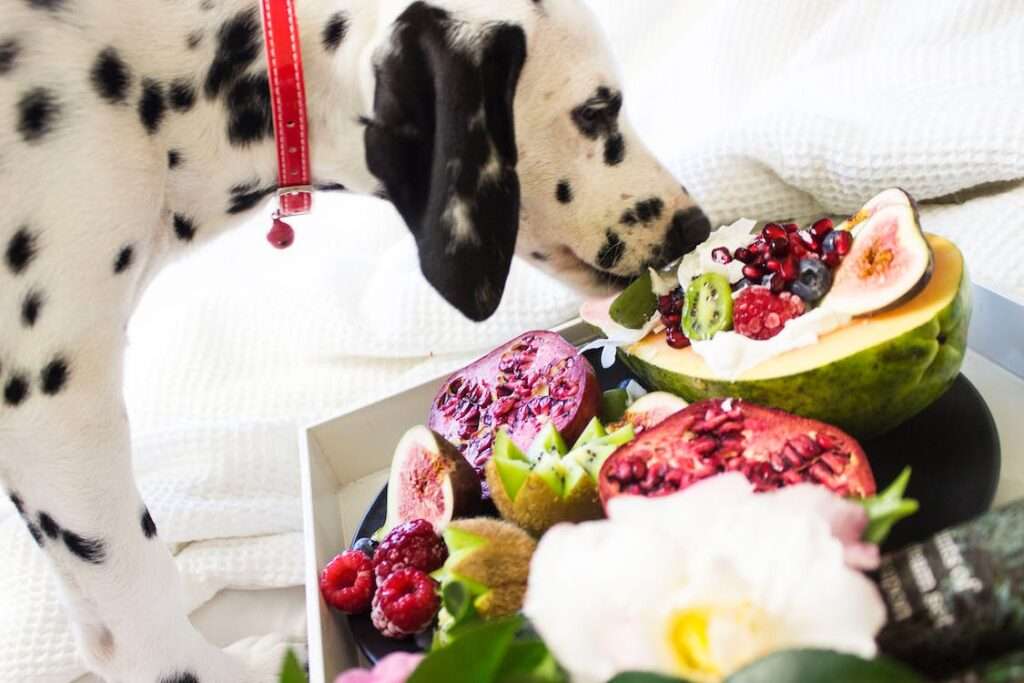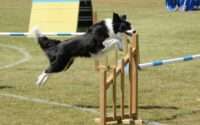Why is My Dog Not Eating His Food but Will Eat Treats? The Surprising Truth Revealed
Mealtimes are unquestionably one of the most important part of your pup’s daily routine if you’re a dog owner. So when your furry friend suddenly starts turning up his nose at his usual kibble but eagerly devours treats, it can be concerning. After all, the goal of every dog owner is making sure that your dog is getting the nutrition he needs to stay happy and healthy always.
In this article, we’ll explore some of the possible reasons why your dog might not be eating his food but will eat treats. We’ll also provide tips for encouraging your dog to eat his food and offer some insights into the role of treats in your dog’s diet.
Possible Reasons Why Your Dog is Not Eating His Food

Is your dog refusing to eat his food? It can be concerning when your furry friend turns up his nose at mealtime. There are several potential reasons why your dog might be exhibiting picky eating habits. Understanding these reasons can help you address the issue and ensure that your canine companion is getting the nutrition he needs to stay healthy and happy.
- Medical Issues: A common cause of appetite loss in dogs is underlying medical issues. Dental problems, digestive issues, or even more serious illnesses can lead to a decreased appetite. If your dog’s lack of appetite persists or is accompanied by other concerning symptoms, it’s crucial to consult with a veterinarian to rule out any medical conditions.
- Stress and Anxiety: Dogs can be sensitive creatures, and stressful situations can impact their appetite. Changes in the environment, such as moving to a new home, the presence of unfamiliar guests, or even loud noises, can cause stress and disrupt your dog’s eating routine. Creating a calm and quiet feeding environment can help alleviate anxiety and encourage your dog to eat.
- Boredom or Food Aversion: Just like humans, dogs can get bored with their food. Eating the same meal every day can lead to food aversion and decreased interest. Introducing variety in your dog’s diet, such as different flavors or textures, can help stimulate his appetite. However, it’s important to make dietary changes gradually to avoid digestive upset.
- Inconsistent Feeding Routine: Dogs thrive on routine, and their mealtime is no exception. Inconsistencies in feeding schedule can confuse your dog and cause him to lose interest in his food. Establishing a regular feeding routine with set meal times can help your dog anticipate and enjoy his meals.
- Behavioral Issues: Occasionally, behavioral issues can contribute to picky eating habits in dogs. Dogs may develop learned behaviors, such as begging for table scraps or holding out for treats, which can reduce their interest in their regular food. Consistency and discipline during feeding time can help address these behavioral issues and establish healthy eating habits.
It’s important to observe your dog’s eating habits and monitor his overall health. If your dog’s appetite loss persists, it’s advisable to consult with a veterinarian for a comprehensive evaluation. They can provide guidance tailored to your dog’s specific needs and recommend appropriate solutions to encourage healthy eating habits.
Why Your Dog Might Prefer Treats Over His Food
Have you ever wondered why your dog eagerly devours treats but seems disinterested in his regular food? It’s a common concern among pet parents. While dog food and treats may appear similar to us, there are subtle differences that can influence your pup’s eating habits.
- Flavors and Texture: Treats often have more intense flavors and unique textures compared to regular dog food. These qualities can make them more enticing to your dog’s palate. The burst of flavor and satisfying crunch of a treat can be quite appealing, leading your dog to prefer them over his everyday meals.
- Higher Fat and Calorie Content: Treats are typically formulated to be higher in fat and calories, designed to be occasional indulgences or rewards. This concentrated burst of energy can be highly rewarding for your dog, making treats seem more desirable than his regular food. However, it’s important to remember that excessive treat consumption can lead to weight gain and potential health issues, so moderation is key.
- Changing Taste Preferences: Just like humans, dogs can develop changing taste preferences over time. Your dog may have once enjoyed his regular food, but now he may have developed a preference for treats due to their unique flavors or variety. As taste preferences can evolve, it may be worth exploring different dog food brands or flavors to find one that captures your dog’s interest.
- Ingredient Sensitivities: Dogs, like humans, can have sensitivities or allergies to certain ingredients in their food. It’s possible that your dog’s reluctance to eat his regular food is due to a sensitivity or aversion to specific ingredients or additives. Consulting with your veterinarian can help you identify any potential allergies or intolerances and find suitable alternatives.
If your dog consistently prefers treats over his regular food, it’s important to address the issue to ensure he’s receiving a balanced diet. Here are a few strategies to consider:
- Gradual Transition: Slowly introduce new dog food flavors or brands to find one that appeals to your dog’s taste buds. Mix a small amount of the new food with his current food and gradually increase the proportion over time.
- Enhance Aroma and Palatability: Some dogs are more enticed by food with strong aromas. Try warming your dog’s food slightly or adding a small amount of low-sodium chicken broth or gravy to enhance its smell and taste. Be mindful of not overdoing it and altering the nutritional balance of the meal.
- Consult with a Veterinarian: If your dog’s food preferences persist or you have concerns about his nutrition, consult with your veterinarian. They can provide tailored recommendations based on your dog’s specific needs, ensuring he receives a well-balanced diet.
Do bear in mind that treats should not replace regular dog food as they lack the essential nutrients required for your dog’s overall health. Moderation and a balanced diet are crucial for his well-being. By understanding your dog’s preferences and making necessary adjustments, you can help ensure he enjoys his regular meals while still savoring the occasional treat as a special reward.
Strategies for Encouraging Your Dog to Eat His Food
Is your dog still turning up his nose at his food? Don’t worry, there are several strategies you can try to encourage him to eat and regain his healthy appetite. Here are some ideas to get you started:
- Switch up the Brand or Type of Food: Just like us, dogs can get bored with the same food day after day. Consider trying a different brand or flavor of dog food to pique your pup’s interest. Introducing new tastes and textures may reignite his excitement for mealtime.
- Add Flavorful Enhancements: Sometimes, a little extra flavor can entice your dog to dig in. You can add low-sodium chicken broth or a sprinkle of parmesan cheese to his food to give it an extra kick. These flavorings can make the meal more enticing and appealing to your dog’s taste buds.
- Warm Up the Food: On chilly days or when your dog seems less interested in his food, try warming it up slightly. The warmth enhances the aroma and can make the meal more appealing to your pup. Just ensure the food is not too hot and always test the temperature before serving it to your dog.
- Establish a Feeding Routine: Dogs thrive on routine, and having a consistent feeding schedule can help stimulate their appetite. Try to feed your dog at the same times each day, creating a predictable routine that he can rely on. Make mealtime a calm and quiet experience to help your dog relax and focus on his food.
- Avoid Reinforcing Picky Eating: It’s important not to give in to your dog’s picky eating habits. If you constantly offer alternative options or hand-feed him, it may reinforce the behavior. Instead, be patient and persistent. Set the food down at mealtime and give your dog some space to eat on his own. If he doesn’t eat within 15-20 minutes, remove the food until the next scheduled mealtime.
It’s essential to provide a balanced diet for your dog’s overall health. If your dog’s picky eating persists or if you have concerns about his nutrition, consult with your veterinarian for personalized advice. By implementing these strategies and showing patience and consistency, you can help your dog develop healthy eating habits and enjoy his meals once again.
The Role of Treats in Your Dog’s Diet

Treats can be a wonderful addition to your dog’s diet, providing tasty rewards for good behavior and adding some excitement to his day. However, it’s crucial to understand their proper role and use them in moderation to maintain your dog’s overall health and well-being.
When it comes to treats, quality matters. Choose healthy dog treats made with wholesome ingredients. Look for options that are free from added sugars, artificial colors or flavors, and fillers like corn or wheat. By selecting high-quality treats, you can ensure that your furry friend receives the nutritional benefits without unnecessary additives or fillers.
Remember, treats should never replace a balanced diet. They should only make up a small portion of your dog’s daily caloric intake, generally no more than 10%. Overfeeding treats can lead to weight gain and potential health problems, such as obesity and digestive issues. Just like humans, dogs can experience health consequences from excessive indulgence.
Consider your dog’s size when choosing treats. Small dogs will require smaller treats, while larger dogs can handle more substantial options. Ensure that the treats are appropriate for your dog’s size to prevent choking hazards or overconsumption.
If you find yourself giving your dog more treats than usual, it’s important to adjust his regular food intake accordingly. This will help maintain a balanced diet and prevent excessive calorie intake. Your veterinarian can provide guidance on portion sizes and the overall caloric needs of your dog.
Remember, treats are meant to be a special reward and should be given sparingly. They should not be the mainstay of your dog’s diet. Instead, focus on providing a well-balanced and nutritionally complete dog food as the foundation of his meals.
When to Seek Veterinary Help
Your dog’s well-being is of utmost importance, and if you notice persistent issues with his appetite or any concerning symptoms, it’s crucial to seek veterinary help. A veterinarian can provide expert guidance and necessary medical intervention to address any underlying health conditions and ensure your furry friend receives the care he deserves.
If your dog’s lack of appetite continues despite your efforts to encourage him, it may be a sign of an underlying issue. Significant weight loss, vomiting, lethargy, diarrhea, or sudden changes in behavior or appetite are all indicators that veterinary attention is needed. By consulting with a veterinarian, you can receive a comprehensive examination and diagnosis to identify any potential health concerns.
Your vet may recommend specialized diets or prescription foods tailored to your dog’s specific needs, ensuring he receives the necessary nutrients and support for his overall health. In some cases, supplements or medications may be prescribed to address underlying health conditions and aid in improving your dog’s appetite and well-being.
Conclusion
Keeping your dog healthy and happy requires more than just providing him with a comfortable home and plenty of love and attention. It also means paying close attention to his diet and ensuring that he’s getting the nutrition he needs to thrive.
If your dog is being picky about his food but gobbling down treats, there are several strategies you can try to encourage him to eat. From switching up his food to adding flavorings and establishing a regular feeding routine, there are plenty of ways to get your dog back on track.
Always remember to be patient and persistent in your efforts to encourage healthy eating habits, and seek veterinary help if your dog’s lack of appetite persists. With a little bit of effort, care and attention on your end, you can help to ensure that your dog remains happy and healthy for the many years to come.
Frequently Asked Questions
Q: Is it normal for my dog to prefer treats over his regular food?
A: It is not uncommon for dogs to have preferences when it comes to food. Some dogs may find treats more enticing due to their taste, texture, or smell. However, it’s important to ensure that your dog receives a balanced diet from a high-quality dog food.
Q: How can I encourage my dog to eat his regular food instead of just treats?
A: If your dog is consistently showing a stronger preference for treats, there are a few strategies you can try. You can gradually mix a small amount of treats into his regular food to make it more appealing. Additionally, feeding your dog at regular intervals and creating a calm feeding environment can help improve his interest in his regular food.
Q: What should I do if my dog refuses to eat his regular food but readily consumes treats?
A: If your dog consistently refuses to eat his regular food but willingly eats treats, it’s important to rule out any underlying health issues. Monitor his behavior, check for any other symptoms, and consult with a veterinarian if the lack of appetite persists or if you have any concerns.
Q: Can giving too many treats negatively impact my dog’s health?
A: Overindulging in treats can lead to weight gain and potential nutritional imbalances. Treats should be given in moderation and should not replace a balanced diet. Ensure that your dog’s nutritional needs are met by providing a well-balanced dog food alongside occasional treats.
Q: Are there any training methods to help my dog develop a healthier relationship with his regular food?
A: Yes, you can implement positive reinforcement training techniques to encourage your dog’s interest in his regular food. Associating mealtime with positive experiences, such as praise or small rewards, can help create a positive association and increase his motivation to eat his regular food.
Q: What can I do to stimulate my dog’s appetite?
A: There are several things you can try to stimulate your dog’s appetite. You can try offering a different brand or flavor of dog food, warming the food slightly to enhance its aroma, or adding a small amount of low-sodium chicken broth or gravy to make it more appealing. Regular exercise and a consistent feeding schedule can also help improve appetite.
Q: Can treats be used as a substitute for regular dog food?
A: Treats should not be used as a complete substitute for a balanced diet. While treats can be given as rewards or for training purposes, they lack the essential nutrients needed for your dog’s overall health. It’s important to ensure that your dog is receiving a well-balanced diet from a high-quality dog food.
Remember, if you have any concerns about your dog’s eating habits or overall health, it’s always best to consult with a veterinarian who can provide specific advice based on your dog’s individual needs.




